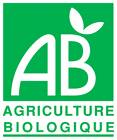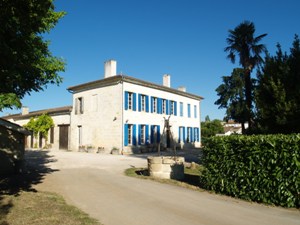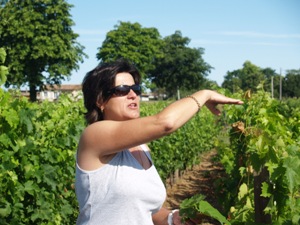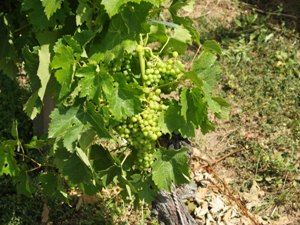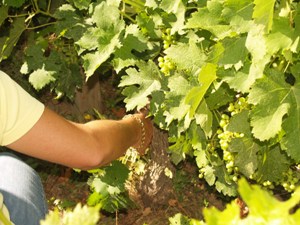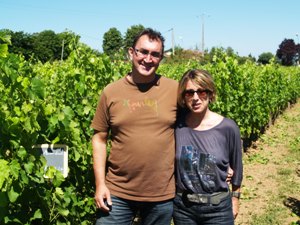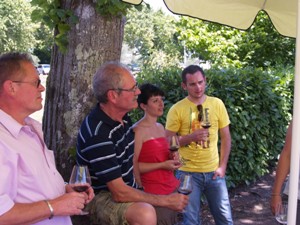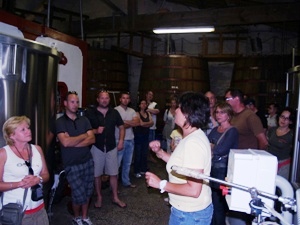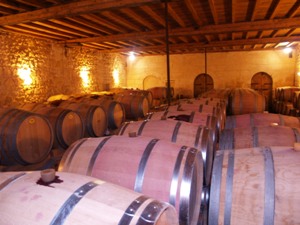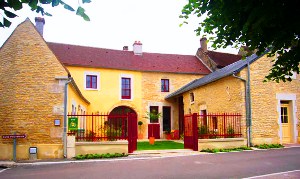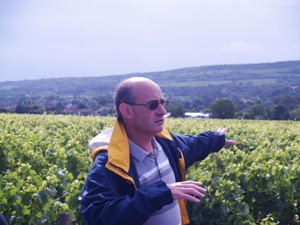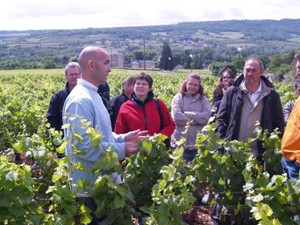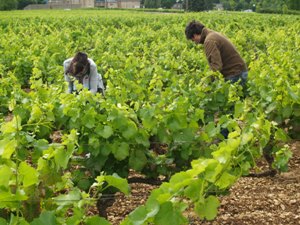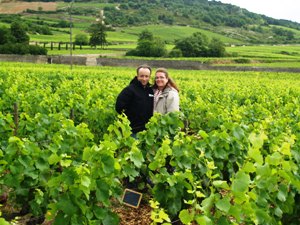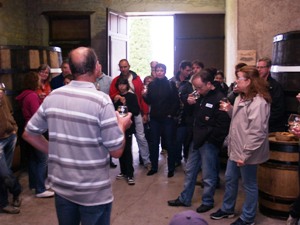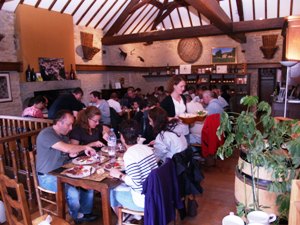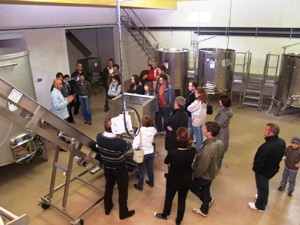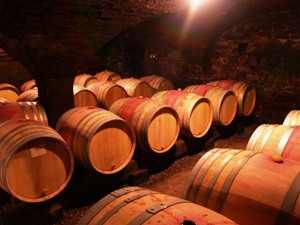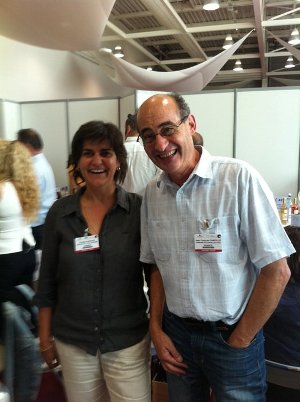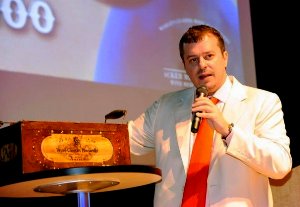We've just got back from a very hot and sunny Gourmet Odyssey
Wine Discovery Experience weekend at Château Beau Rivage in
Macau-en-Médoc, Bordeaux.
After the initial introductions, we headed straight out into the
vineyard, accompanied by Christine Nadalié, the owner and
winemaker.
Christine explained the differences between the 5 grape varieties
that are grown in the vineyard; cabernet franc, cabernet
sauvignon, merlot, malbec and petit verdot, and talked us through
each of the key stages in cultivating the grapes from pruning
through to harvest.
The grapes are already well developed on the vines, and like
elsewhere in France, are a couple of weeks ahead of where they
would normally be. This is a direct result of the very warm
spring that we have experienced.
As is the custom with a Gourmet
Odyssey Wine Experience Day, we learn by doing, so there is
always some work to do! Christine had three tasks that she
had been saving up for us; épamprage, effeuillage and relevage.
Firstly, épamprage is the removing of the unwanted shoots that
sometimes grow from the foot of the vines. These shoots can
grow as tall as the whole plant and don't produce any grapes, so
if not managed, they take away nutrients and energy from the
fruit bearing branches. The smaller shoots can easily be
pulled off by hand, but some of the thicker and more established
shoots need the help of a small knife or pair of secateurs.
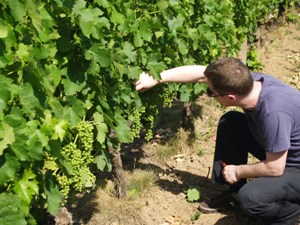
The next job that Christine explained was effeuillage, which
involves removing some of the leaves that cover the grapes.
There are two primary reasons for this. One is to increase
the amount of sun that the grapes receive to help them mature,
and the other is to increase the flow of air around the
grapes. This is particularly important to combat mildew
that can damage the grapes following a wet period. The
leaves are removed from the side facing the rising sun
only. This is because the morning sun is weaker, and in the
afternoon the sun is stronger, so the shade from the leaves is
welcome to protect the grapes.
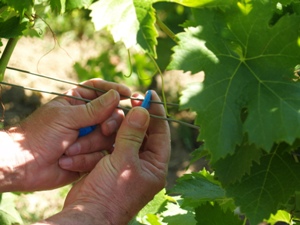
And finally we learnt about relevage. As the vines grow
taller, so the training wires for each row need to be raised to
continue supporting the vines. The wires on each side of
the row are raised to the next peg up on the posts, and the wires
then clipped together using a small clip. All of the
branches are placed between the wires to tidy the row up, and
make sure that the vines aren't damaged when the tractor passes.
We each dispersed among the rows to put into action what
Christine had taught us. Cultivating vines if often a more
manual process than you might think!
A small name board was to be found in front of the adopted vines
for each client, so having perfected the tasks of the day, we
each had the opportunity to introduce ourselves to the vines,
take some pictures and ensure that everything was in order
concerning the effeuillage, épamprage and relevage!
By now it was getting seriously hot in the vineyard, so back to
the château it was to find some shade and start the wine tasting
session! Fittingly, the first wine to be tasted was the rosé
2010, which had been chilling in the fridge!
During the meal of locally prepared charcuterie, we tasted a
large range of wine from Château Beau Rivage including the 2007
and 2006 vintages of the wine selected for the Gourmet Odyssey
Wine Experience, Raphaël 2007, Clementine 2004, le Phare
2001 and Christine's Haut-Médoc wine, Clos la Bohème 2007 and
2006.
The cool of the chai was welcome after lunch. Christine
showed us the fermentation tanks used to ferment the wine, and
explained how the sugar in the grapes is transformed into
alcohol.
We finished the day in the cellar, where we saw the impressive
collection of oak barrels that are used to mature the
wines. This part of the day, gave us an insight into one of
Christine's other passions, the art of barrel making, which she
has grown up with, coming from a family of coopers.
Many thanks to Christine, Guillaume and Aurélie for letting us
get behind the scenes to discover a small part of the fascinating
world of wine making.
